NOTE: Because of a server error this newsletter had to be resent October 10th.
It has been written that there are no toxic native North American grasses. As I have not met them all I don’t know but I have met sandspurs and vengeance is mine…
While universally called “sandspurs” they are actually “sand burrs.” Regardless of what they’re called they are a pain in the grass with each seed covered with several sharp spines. These are usually discovered in feet and ankles and the fingers that extract them. (Small needle-nose pliers in the backpack work wonders.) Sandspur victims are always amazed to learn sandspurs are edible. Nature knows that which is why the nutritious and tasty grain is covered with spines. Clearly grain and spines have to be separated if we are to enjoy them. My favorite method is to use a campfire to burn the spines off and then eat them right off the stem. While one can find them nearly all year round a fresh fall crop is ready to be harvested. To learn more about sandspurs click here.
Foraging is often surprising, and occasionally dangerous. I receive literally hundreds of unsolicited emails daily from people I’ve never met who have never taken a class on foraging. With a little editing here what one said: I thought poke berries were elderberries. I boiled them with sugar and lemon and made I pie. I had two pieces, my kids had one. Is there any danger? At that point three thoughts go through you mind at once: Yes there is a danger, I hope you’re all right, how could you possibly confuse poke berries and elderberries? As for being alright… I responded but have not received a follow up email. As to danger it comes down to how many poke berry seeds were chewed, particularly by the children. They are much smaller and are at greater risk from such things. In regard to confusing the two species … if someone can confuse them then the issue needs to be addressed.
Elderberries are a shrub, think of them as small bushy trees with bark. They have BB-sized berries, dark purple. (To learn about red elderberries read the full article.) They are arranged in what is called a flattop but can also be shaped like the top of an umbrella. Leaves are four to six inches long, about an inch wide, and lance shaped with fine teeth. Poke berries are pea size or larger. They have a dimple on the end and are arranged in a raceme, like a bottle brush with berries at the end of the bristles. Poke weed does not have bark. It’s herbaceous, usually with red stems with long large leaves. The leaves can be up to a foot long and four inches wide. No teeth on the leaves. Does one have to underscore how important it is to properly identify plants?
As unfortunate as this is let’s put it in perspective. A study published in the Journal of Natural Toxins (Krenzelok and Provost, 1998) analyzed information from national Poison Information Centers over a ten-year period. Poke weed was the seventh most frequently ingested poisonous plant. However, 65.3% of those ingestion caused “no effect,” 5.8% a “minor effect,” and 0.4% a “moderate effect.” No one died from poke weed in the range of the study. Compare that to a report in the Journal of the American Medical Association (Lazarou, 1998) which says more than 100,000 patients die and more than two million are seriously injured every year in the United States from bad reactions to properly administered drugs in hospitals. If you study foraging you can reduce your risk to near zero. There’s little you can do to reduce your risk in the hospital.
While nettle season is over in northern climates locally they will be coming up in about a month or so and will last into March. While the stinging plant is known as a food and medicine it is also a textile. Ropes, nets even clothes were made out of nettle fibers. Long before silk was known to western peoples the nettle fiber was the soft, glossy textile for high-end clothes. In fact a 2,800 year old example made the news this past week. The journal Scientific Reports said some ancient fabric scraps found in a Danish grave date back to 940 B.C. to 750 BC. They were found in Voldtofte, a rich Bronze Age burial ground. The fabric was wrapped around the cremated remains of a man in a bronze urn. Using nanophysics researchers also discovered the nettle cloth was not from Denmark but from the Austria area. Also in the urn were two razors. The speculation is the owner died in Austria, was cremated, and then brought back to Denmark for burial. That a long journey when distance was covered by foot. The return of the remains, the nettle cloth and the razors point to his high status. Nettle cloth is not passe by the way. My friend Sunny Savage has a line of clothing made from nettle fibers. You can visit her site here.
There would be far less wild weeds without domestic bees. Among the pollinators — bees, birds, bats, other insects — bees are the most common and the most threatened. Without bees modern humanity does not eat. In the past when there were billions less people solitary wild bees and the other pollinators got the job done. Two incidents of late show how vulnerable bees are. In the Alsace region of France this fall some bees produced green or blue honey. Some 35,000 colonies of bees and 2,400 beekeepers call the area home. They produce about 1,000 tons of honey each year. Part of this year’s harvest was lost, however. The prime question was how did the honey get colored? The buzz was M&M’s were to blame and indeed they were. There’s a bio-gas nearby processes waste from a Mars plant that makes M&M’s, those chocolate treats which come in a rainbow of colors, including blue and green. Apparently the bees were attracted to the sweet waste and were carrying the vibrant colors home. This is not the first time honey has gone technicolor. In 2010 some Brooklyn bees were making red honey. Beekeepers traced the dye to the waste of a plant that produced maraschino cherries.
If you are a student of alternative ways of making fire you probably have on hand glycerin and potassium permanganate. Glycerin is a skin emollient, among many uses, and potassium permanganate is a disinfectant and dye. Both are often found in emergency kits. When put together in roughly equal amounts the burst into hot flames after about 40 seconds, call it chemical oxidizing. Another use for glycerin is preserving flaming bright fall leaves. Here’s how:
After the leaves have turned color but before a frost find small branches full of leaves at the peak of their color. Cut a branch off and pound it with a hammer where you cut it. You want to mash the very end to help is take up the liquid you are going to put it in. To a half gallon of water (two quarts) add two cups plus two tablespoons of glycerin and four to five drops of liquid dish soap. Put the branches in the liquid and put them in a shady spot for three to five days (magnolia leaves however take three to six weeks.) The leaves will absorb the glycerin. Not only will the glycerin preserve the color but will makes colors more vibrant. Yellow intensifies, reds and oranges turn ruddy while green magnolia leaves become russet with a deep glossy veneer.
New article added: Pandanus
What can you do with all those pine needles? Well other than tea or a tincture to treat the flu consider pine needles and salmon:
Pine-Smoked & Maple-Glazed Wild Salmon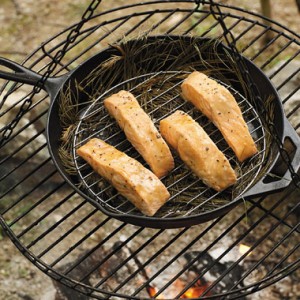
- 1 to 2 large handfuls green pine needles
- 1/2 cup bourbon
- 1/2 cup maple syrup
- 3 tablespoons Dijon mustard
- 2 teaspoons freshly milled black pepper
- Four 6-ounce salmon fillets, patted dry
- Coarse salt, to taste
- One 9-inch round wire cooling rack
1. Prepare a medium-high-heat fire, with the flames occasionally licking the grill grate. Let it burn for at least 30 minutes. While the fire heats, soak the pine needles in the bourbon.
2. In a bowl, whisk together the syrup, mustard, and pepper. Season the salmon generously with salt and coat with the glaze.
3. Place a large cast-iron skillet upon the grill grate. Let it heat until very hot. Using tongs or a gloved hand, press the needles into the bottom of the skillet, taking care not to drizzle combustible bourbon into the flames, and place the rack on top of the needles. Place the fish on top of the rack and cover the pan. Cook until the fish is just opaque, about 15 minutes for medium. Serve, brushed with additional glaze, if desired.
Not into grilling but your refrigerator works? Then how about curing with salt and sugar:
Pine-Cured Salmon
- 1 1/2 to 2-pound piece center-cut salmon fillet
- 6 tablespoons coarse salt
- 1/2 cup sugar
- 1 1/2 cups green pine needles, rinsed well
- 2 teaspoons peppercorns.
1. Cut the salmon fillet in half and dry each side well with paper towels. Combine the salt and the sugar and sprinkle of this mixture all over the fish. Sprinkle the bottom of a glass baking dish with of the remaining salt-and-sugar mixture.
2. Coarsely chop the pine needles. Crush the peppercorns and add to the pine needles. Chop the mixture some more to make a coarse mash. Scatter about 1 tablespoon of this mixture on top of the salt-and-sugar mixture in the glass dish.
3. Lay one of the salmon pieces skin side down in the glass dish. Spread of the pine needle mixture on the exposed, fleshy side of the fish, then sprinkle lightly with the salt-and-sugar mixture. Place the second salmon piece flesh side down on top of the other piece. Sprinkle with the remaining salt-and-sugar mixture and then with the remaining pine needle mixture.
4. Cover the salmon loosely with aluminum foil. Place a light weight, like a cutting board or a small platter, on top of the fish and refrigerate for 5 hours to allow the salt to leech as much liquid as possible from the fish. Drain this liquid, turn the fish over, reapply the weight and keep refrigerated for at least 48 more hours.
5. Before serving, use a paper towel to remove all the pine needles. Slice wafer thin on a bias.
Man dies after cockroach-eating contest. However other people in the contest did not get sick. The contest was to win an Ivory Ball Python, which now goes to Edward Archbold’s estate. That’s him to the right, which is from a mug shot from a 2004 arrest on disorderlly conduct and indecent exposure charges. An autopsy is scheduled to see what caused his death. Perhaps he had a shellfish allergy which does include insects. To read about edible insects including cockroaches click here. Read the full story about the contest who died, click here.
To donate to the Green Deane Newsletter click here.

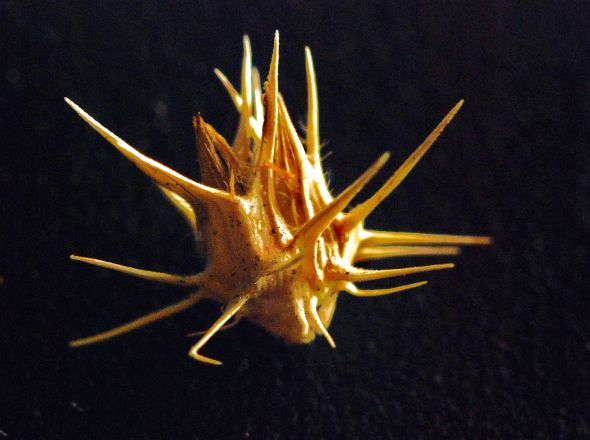
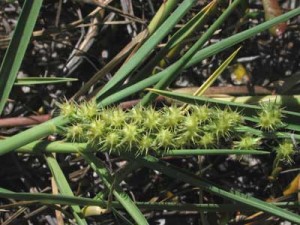
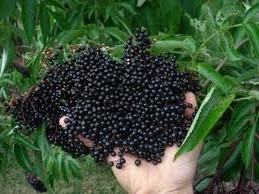
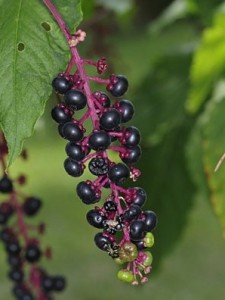

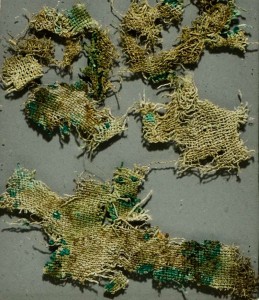
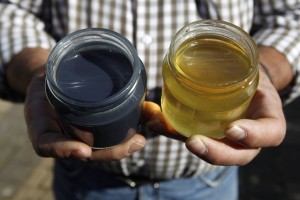
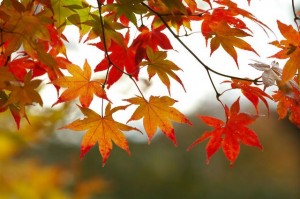
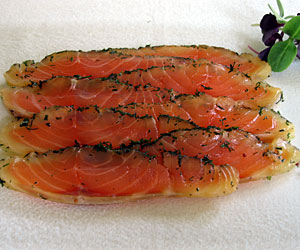


I am sorry he had to die,
But people should stop doing these insane “games”.
It’s about time that people start to realize that every living creature has a right to the life it was meant to have. No different then from us, humans.
Dean,
Interesting story on the off colored honey. Begs the question:
Does this also make the honey unpalatable?
Thanks for the great service you provide for all of us.
Thanks. I don’t think they can sell it but I have not heard that they can’t consume it.
Dear Green Deane,
I love your videos and blog, and have learned a great amount from them, in an entertaining way! You certainly have a gift of giving information in a way that is easily remembered.
The pine recipes sound delicious (but I’m not sure about blue honey!)~
~Marqueta G.
Hi there,
I have been searching high and low for potassium permanganate for some time, to no avail. Have you any suggestion as to where I may procure some?
Thanks in advance!
Dallas
I buy mine in bulk at farm stores that sell irrigation supplies (it’s used as a disinfectant.)